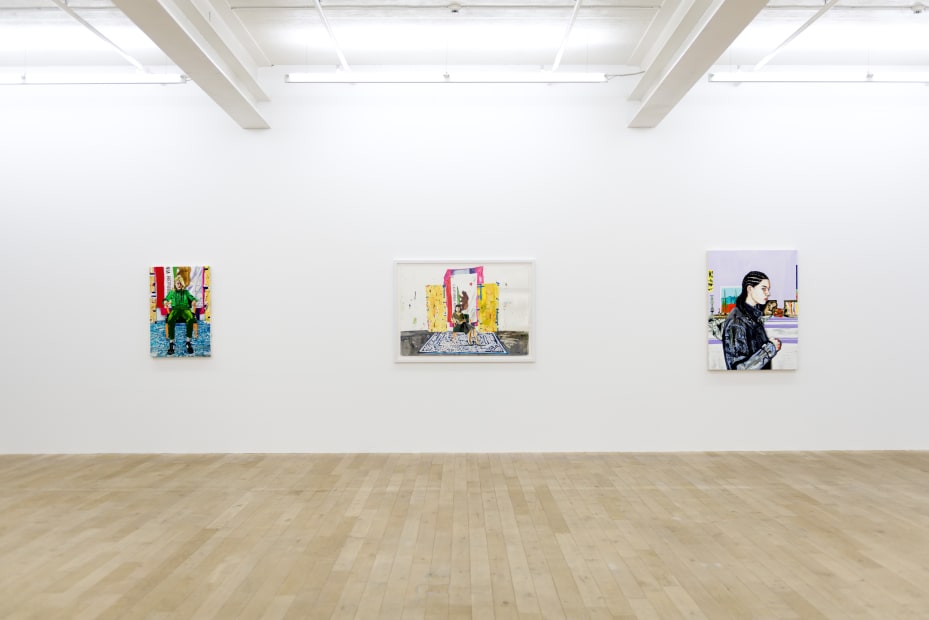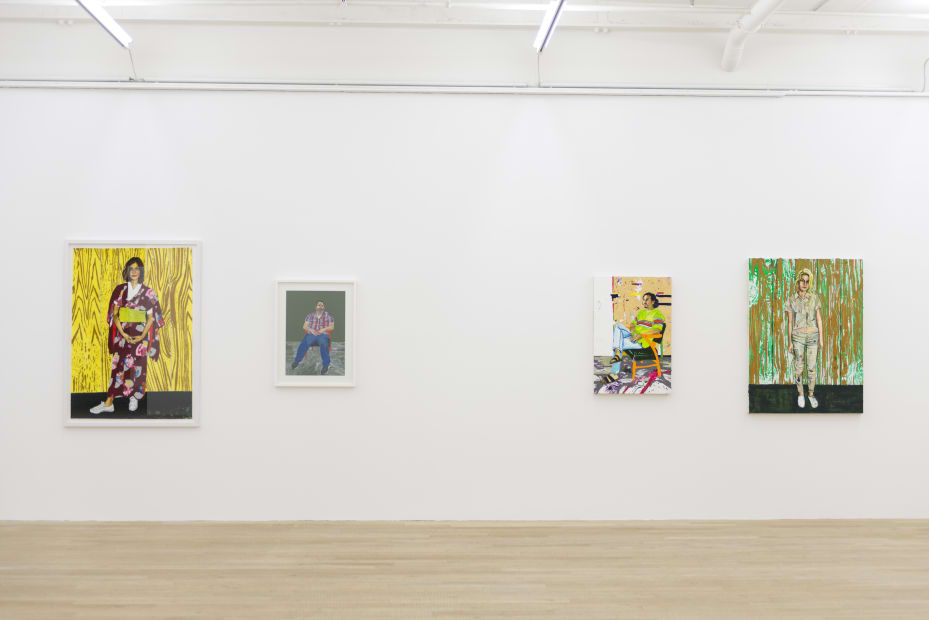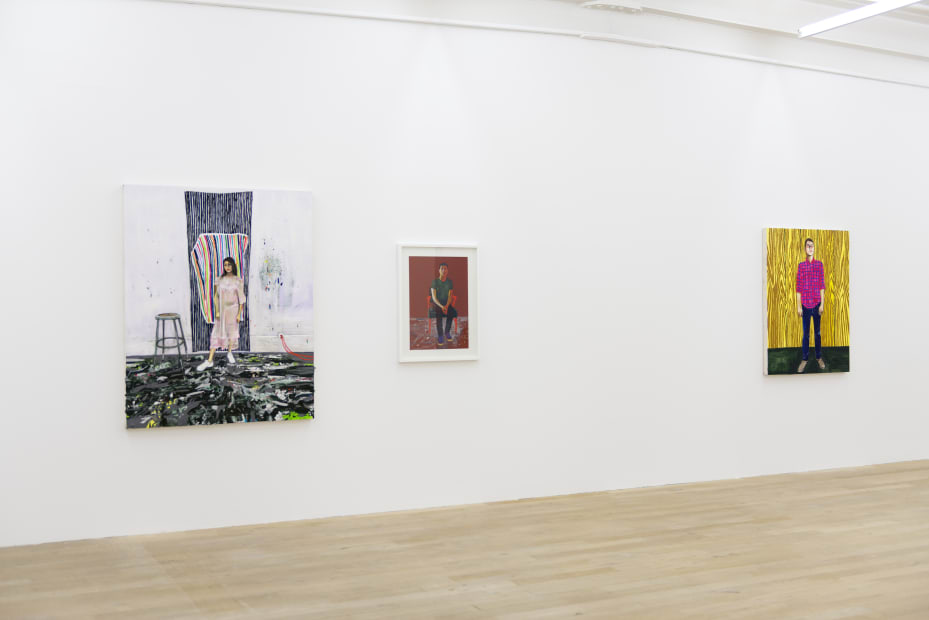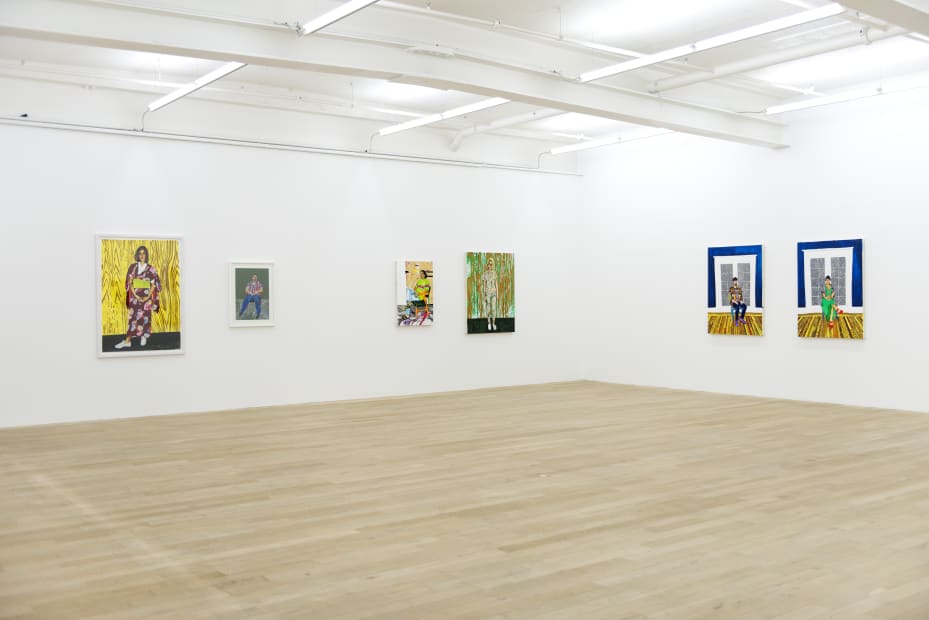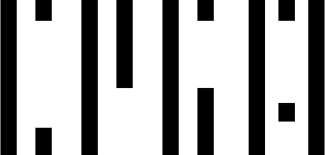Raffi Kalenderian: PortraitsGalerie Peter Kilchmann, Zahnradstrasse, Zurich
Galerie Peter Kilchmann is pleased to present the fifth solo exhibition of the American artist Raffi Kalenderian. He was born in Los Angeles in 1981 and the Californian metropole is now the centre of his artistic production. Kalenderian’s paintings and drawings explore the possibilities of the portrait genre and range between reality and poetic illusion.
November 4 - December 22, 2017
-
 Raffi KalenderianAnn Dee, 2017Colored pencil, pastel and acrylic on paper71.12 x 50.8 cm (28.0 x 20.0 in.)
Raffi KalenderianAnn Dee, 2017Colored pencil, pastel and acrylic on paper71.12 x 50.8 cm (28.0 x 20.0 in.)
82.5 x 62.5 cm (32.5 x 24.6 in.), framed -
 Raffi KalenderianWyatt, 2017Colored pencil, pastel, oil and acrylic on paper71.12 x 50.8 cm (28.0 x 20.0 in.)
Raffi KalenderianWyatt, 2017Colored pencil, pastel, oil and acrylic on paper71.12 x 50.8 cm (28.0 x 20.0 in.)
82.5 x 62.5 cm (32.5 x 24.6 in.), framed -
 Raffi KalenderianMark, 2017Colored pencil, pastel and acrylic on paper71.12 x 50.8 cm (28.0 x 20.0 in.)
Raffi KalenderianMark, 2017Colored pencil, pastel and acrylic on paper71.12 x 50.8 cm (28.0 x 20.0 in.)
82.5 x 62.5 cm (32.5 x 24.6 in.), framed -
 Raffi KalenderianDasha, 2017Oil on canvas122 x 91.5 cm (48.0 x 36.0 in.)
Raffi KalenderianDasha, 2017Oil on canvas122 x 91.5 cm (48.0 x 36.0 in.) -
 Raffi KalenderianErika in the Studio, 2017Oil on canvas152.5 x 122 cm (60.0 x 48.0 in.)
Raffi KalenderianErika in the Studio, 2017Oil on canvas152.5 x 122 cm (60.0 x 48.0 in.) -
 Raffi KalenderianAlison, 2017Oil on canvas122 x 91.5 cm (48.0 x 36.0 in.)
Raffi KalenderianAlison, 2017Oil on canvas122 x 91.5 cm (48.0 x 36.0 in.) -
 Raffi KalenderianAlberto, 2017Oil on canvas91.5 x 61 cm (36.0 x 24.0 in.)
Raffi KalenderianAlberto, 2017Oil on canvas91.5 x 61 cm (36.0 x 24.0 in.) -
 Raffi KalenderianIman, 2017Oil on canvas122 x 91.5 cm (48.0 x 36.0 in.)
Raffi KalenderianIman, 2017Oil on canvas122 x 91.5 cm (48.0 x 36.0 in.) -
 Raffi KalenderianDasha (Green Sweater), 2017Oil on canvas91.5 x 61 cm (36.0 x 24.0 in.)
Raffi KalenderianDasha (Green Sweater), 2017Oil on canvas91.5 x 61 cm (36.0 x 24.0 in.) -
 Raffi KalenderianJoe, 2017Oil on canvas122 x 91.5 cm (48.0 x 36.0 in.)
Raffi KalenderianJoe, 2017Oil on canvas122 x 91.5 cm (48.0 x 36.0 in.)













